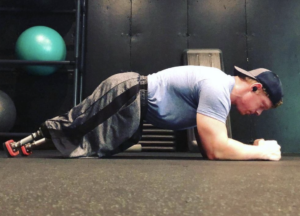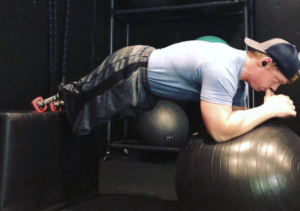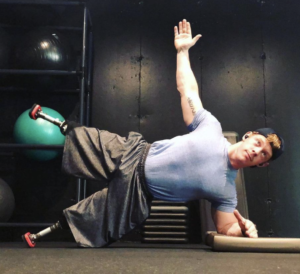
Amputee Exercise Gallery
This gallery contains your comprehensive guide to getting started with exercise as a person with limb loss – specifically, double above knee amputations. It is important to watch the video to the left before exploring any of the exercises below, as it will serve as an introduction to adaptive fitness and training for amputees and ensure that you are doing so safely. The videos at the top of this page will lay the groundwork for some of the lower body fundamental movement patterns and their adaptation for limb loss, gradually getting into more advanced and tertiary training concepts as you progress. If you have questions, feedback, or want to see additional content, feel free to fill out the contact form.
Stubbies/Shorties Basics
The overall goal of this page is to provide a sufficient introduction to exercise as a person with limb loss. These videos cover the lower body-dominant fundamental movement patterns and ways that they can be adapted for bilateral above knee amputees in stubbies. Stubbies are an excellent training tool for people with double above knee limb loss who want to rebuild strength and stamina, and they are great for working out in the gym as well! They also work well for outdoor activities – hiking, fishing, hunting, etc.
Full Length Prosthetics Basics
These videos are geared toward the same movement patterns covered in the previous section, but are shown in full-length knees. The “sit to stand” video takes the place of the “squat” movement progression, and we’ve also added the integrated skill of transferring from the floor to a standing position.
The prosthetic knees shown in the above videos are Otto Bock C-Leg 4’s. I also use Otto Bock Triton feet. My sockets are direct skin-fit/ suction. This is the setup that works best for me as an active, independent full-time prosthetic user. The videos show the result of an optimized setup – sockets that are custom-designed and fit securely, microprocessor knees that are aligned and setup in a way that allows for efficient and stable movement. It is important that you check with your prosthetist to ensure your suspension and prosthetic are setup in a way that is safe for activity!
Supplementary Exercises
These exercises and skills don’t quite fit in with the fundamental movements covered above, but are still worthwhile to have in your repertoire. Facilitating increased independence and a higher quality of living through physical training is what we do! By working on the different exercises and skills demonstrated here, you can rebuild your body and reclaim your independence!
Plank Series




Cardio Exercises
None of what you see or hear from this page constitutes professional medical advice relating to any specific condition, including amputation/limb loss/limb difference. These exercises and movement demonstrations are shown for informational/educational purposes only. None of the content on this page is individualized coaching/training advice, and anything you attempt based on what you see here is at your own risk. Be sure to consult with your medical care professional before undertaking any physical training program/exercise regimen.